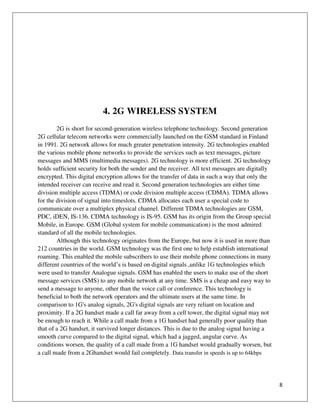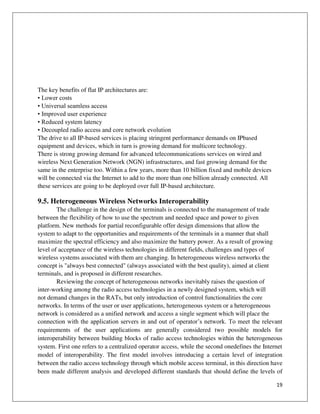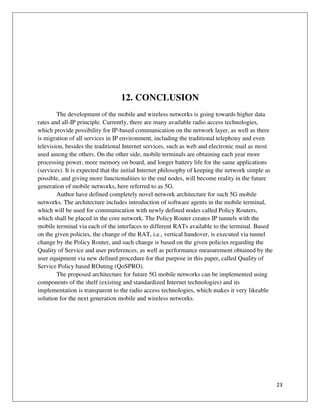This document provides an introduction and overview of 5G technology. It discusses the evolution of mobile technologies from 1G to 5G networks. Key points include:
- 5G is the next major phase of mobile telecommunications following 4G LTE networks and will provide faster speeds, lower latency, and better connectivity.
- Previous generations included 1G (analog voice-only), 2G (digital voice and basic data), 3G (broadband data and internet access), and 4G (high-speed data for mobile internet).
- 5G aims to offer significantly higher minimum speeds (20Gbps+), extreme connectivity for billions of connected devices, and cutting edge applications like autonomous vehicles, telemedicine,


























